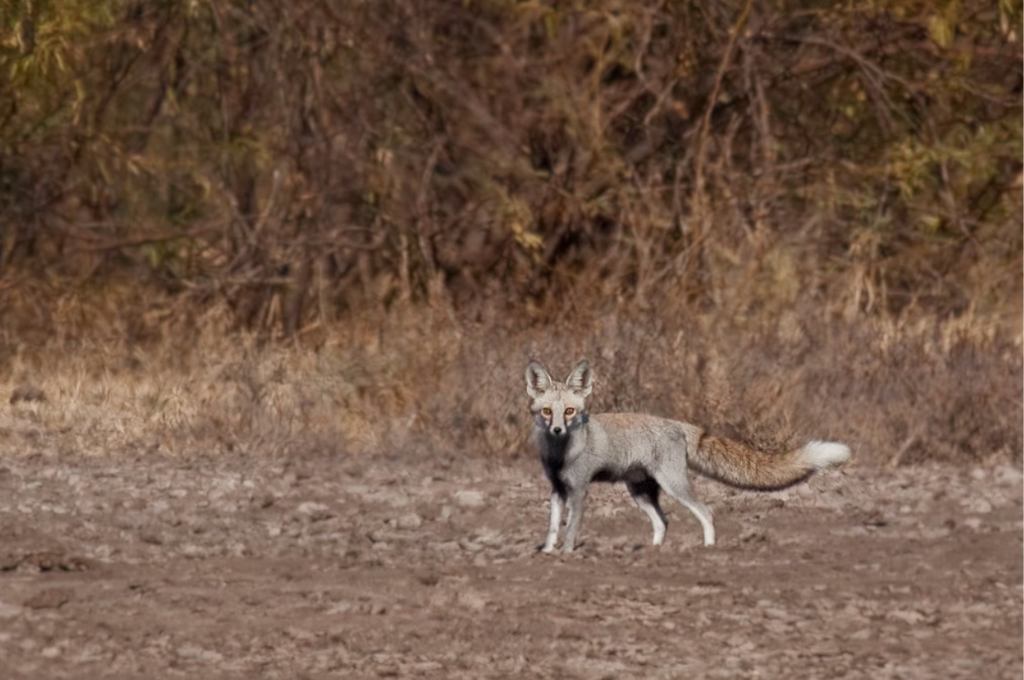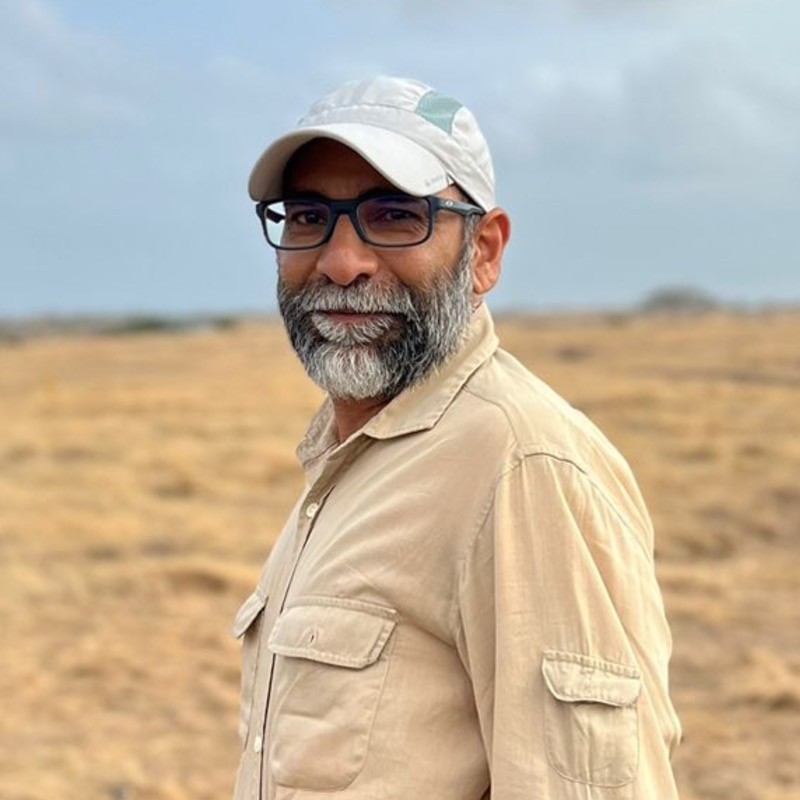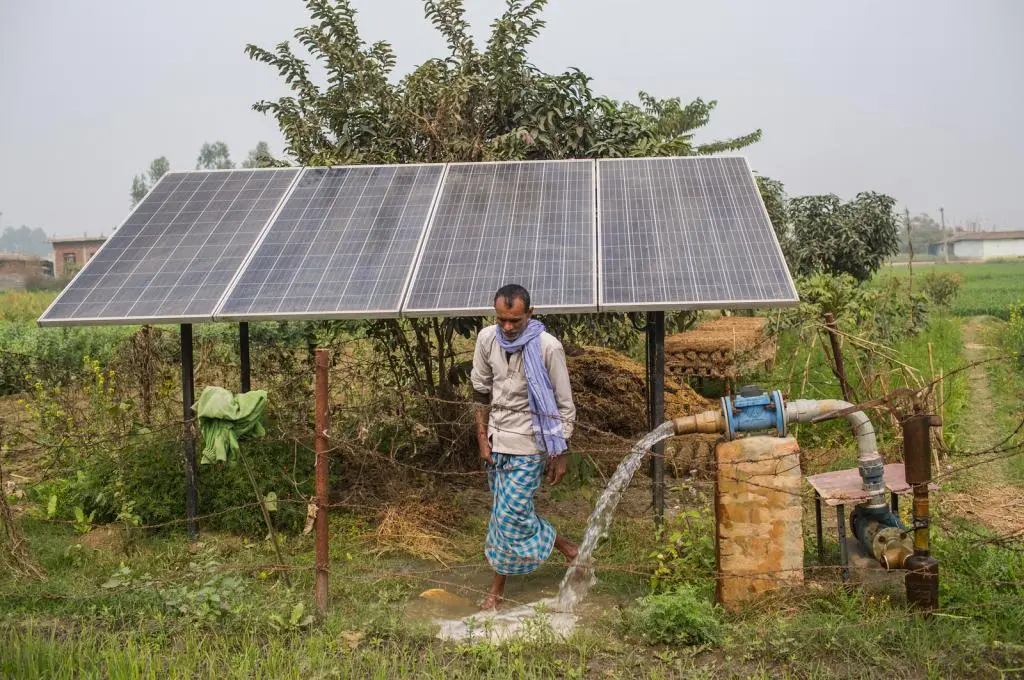In 2019, the Ministry of Rural Development published the latest edition of the Wasteland Atlas of India, which categorised approximately 17 percent of India’s terrain as wastelands, that is, land that appears barren or degraded. According to the ministry, these are areas that are not being utilised to their maximum potential, and can be repurposed for more ‘productive’ uses such as setting up industries, renewable energy projects, or afforestation programmes.
However, this categorisation fails to view semi-arid, non-forested landscapes as distinct ecosystems and instead sees them as degraded forest land. It does not acknowledge that these wastelands encompass diverse ecosystems such as grasslands, shrublands, and deserts. These ecosystems are often referred to as open natural ecosystems or ONEs, and have immense ecological and social value.
Not all wastelands are lying waste
ONEs are found in only 10 percent of India’s dry, sub-humid, and semi-arid zones, particularly in states such as Maharashtra, Gujarat, Rajasthan, and Andhra Pradesh. They are rich in biodiversity and contain several animal species including the great Indian bustard, the blackbuck, the Indian fox, the Indian wolf, and the striped hyena. They also have immense potential for sequestering or storing carbon from the atmosphere. Grasslands, for instance, can capture about 146 tonnes of carbon per hectare below the ground each year. Additionally, approximately 25 nomadic pastoralist communities in India such as the Dhangars in Maharashtra and the Rabaris in Rajasthan depend on ONEs. As noted by the Planning Commission in the Report of the Task Force on Grasslands and Deserts 2006, ONEs provide nearly 50 percent of the fodder for India’s 500 million livestock.
A lack of awareness about the value of ONEs and their subsequent misclassification as ‘wastelands’, however, makes it easier to divert these lands, threatening the very existence of these landscapes and that of the communities who depend on them.
Proposed climate solutions are creating a new set of pressures on wastelands
As India races towards achieving its net-zero carbon goals, wastelands are being earmarked for various climate-related projects by businesses, nonprofits, and the government. While these initiatives are being lauded as an important part of India’s climate goals, they directly impact the health of ONEs.
Greening wastelands: The idea of greening wastelands through afforestation and tree plantations is proposed as a potential pathway to create additional carbon sinks and to increase green cover. Actors advocating for this include the forest department and other government agencies, CSR wings of private sector companies, and well-meaning development consultants and nonprofit organisations.

While tree plantations have become a trending environmental intervention, they can destroy the ecosystem of these semi-arid landscapes. For one, they can alter the soil composition in the area. Additionally, species that are planted often require large amounts of water, leading to the deterioration of groundwater tables, and ultimately resulting in the depletion of water resources in an already water-scarce landscape. Such interventions can also alter the biodiversity present in the region.
The Banni grassland in Gujarat’s Kutch district provides an interesting insight into the same. The grassland is home to more than 40 species of grass that support a variety of wildlife, including several migratory birds and the Indian desert fox. In the 1950s, to keep the salinity of the region in check, the state government introduced a South American tree called Prosopis juliflora, locally referred to as gando baval or mad babul. The tree adapted to the region very quickly and now covers more than 50 percent of the grassland. This, however, has had a devastating impact on the desert fox, which uses the saline grasslands as its habitat. Since woods are unsuitable for fox habitation, their number has rapidly declined.
Energy transition: Another significant arena of climate action is the transition from a fossil-fuel-based brown economy to a green low-carbon economy run on renewable energy. Dismantling the ‘brown’ economy, however, requires large swathes of land for setting up solar, wind, and green hydrogen energy power plants. ONEs, majorly under the wasteland classification, are seen as ideal for setting up the physical infrastructure required for this.
Since the construction of the solar park, however, the grazing patterns of herders have been disrupted.
States such as Gujarat, Rajasthan, Tamil Nadu, Maharashtra, and Karnataka, with the largest number of ONEs, are also the ones identified as having high potential for renewable energy. This could have consequences for the ecological health of the landscape as well as for the people and communities dependent on these lands. For example, the setting up of solar energy parks and wind energy projects in Rajasthan and Gujarat has led to a decline in the population of the great Indian bustard. In addition to loss of habitat, power lines act as a hazard, resulting in mortality from electrocution and collision. Such projects also restrict access to common grazing lands for pastoralists. For example, India’s first solar park, which was built in Charanka, Gujarat, in 2012 on a dryland area of 2,180 hectares, of which more than 1,000 hectares was classified as wasteland. This area has been historically used by semi-nomadic Rabari herders. Since the construction of the solar park, however, the grazing patterns of herders have been disrupted, affecting their mobility and resource use. They can no longer access these areas to collect firewood or graze their livestock.
What needs to change?
While such interventions may be well-intentioned, they fail to take into account the varied ecosystems that fall under the wasteland categorisation. The unintended consequences of these actions can, in fact, undermine our climate goals. To ensure that India’s green energy transition doesn’t happen at the expense of vital ecological resources like ONEs, governments, businesses, and the development sector must focus on the following:
1. Strengthening protection of ONEs through reclassification of wastelands
As a first step in ensuring the legal protection of ONEs, government bodies must carry out a reclassification of these lands. ONEs are weakly protected, particularly due to their classification as wastelands. Approximately 70 percent of the areas with ONEs overlap with landscapes that the government classifies as wastelands. Additionally, less than 5 percent of ONEs come under the government’s Protected Area network, which comprises national parks, wildlife sanctuaries, and reserves. This leaves them deprioritised as significant areas for conservation and makes them vulnerable to ecosystem degradation and diversion to other types of land use. The Land Acquisition, Rehabilitation and Resettlement Act, 2013, also lays down a clause that mandates the creation of an inventory of unused or barren lands at the district level. This in turn makes it easier for government and private actors to bypass the rights of communities and divert lands that may fall under the wasteland category.
2. Proposing evidence-based interventions
Land-use decisions must be well informed and consider ecological and social factors. Prioritisation exercises carried out by government and non-governmental stakeholders can play a key role in this process. These involve evaluating and ranking different parcels of land to determine their significance or allocation for particular purposes. This can help identify land that needs to be prioritised for conservation as it may contribute to carbon sequestration, or is heavily used by communities, or is rich in biodiversity. Such a prioritisation should include calculating trade-offs that need to be made when identifying lands suitable for renewable energy projects or for other land uses. These exercises should also be used to determine future wastelands classification and incorporate the needs and voices of local communities in decision-making processes. This can help ensure that the energy transition aligns with the unique socio-ecological needs of different landscapes and doesn’t further deplete ONEs.
3. Regulating the renewable sector
The adoption and development of green energy has become pivotal to India’s climate goals. While this is a critical piece, it has taken priority over conserving biodiversity, protecting natural ecosystems and existing carbon sinks, and upholding the rights of local communities. Notably, the green energy industry in India is exempted from both social as well as environmental impact assessments, making ONEs particularly susceptible to diversion. For example, in 2020, a local community in Rajasthan had to resort to legal action to contest the development of the 1,500 MW Fatehgarh Ultra Mega Solar Park in Jaisalmer district. They argued that their livelihoods depended on the land being diverted for the solar project, even though the state government that claims control over the land had categorised it as a ‘wasteland’.
There is, therefore, a need to formulate a policy that mandates impact assessments for such projects that significantly threaten peoples’ access to these landscapes as well as risk destroying biodiversity and carbon sinks.
4. Safeguarding climate-resilient livelihoods
While the transition to renewable energy sources is a crucial step in climate change mitigation, it is equally important to focus on supporting climate-resilient livelihoods. Arguably, pastoralism is one of the more climate-resilient and sustainable livelihoods in India, contributing to 4.5 percent of the GDP, according to the Meat Atlas 2021. Pastoralists have traditionally been using several strategies to adapt to climate variabilities. These include developing climate foresight and migrating based on weather patterns and resource availability as well as selecting appropriate breeds to rear based on climatic and geographical conditions. Pastoralists also use ONEs and wastelands for grazing livestock and to transit through migratory routes. The role of grazing has been acknowledged in the maintenance of these ecosystems. Securing the livelihoods of pastoralists, therefore, can significantly contribute to the sustenance of ONEs.
However, pastoralism isn’t recognised officially by the government. The government must first collect official data on the number of pastoralists in the country and formally recognise pastoralism as a distinct land-use category. There is a need not only to conserve the landscapes they rely on, but also to ensure the right of access for pastoralists.
5. Learning when not to intervene
In the shift from a brown economy to a green economy, it is essential not to oversimplify the narrative as ‘green good, brown bad’. An important point of action for various stakeholders is to recognise when not to intervene. Governments, businesses, and the development sector advocating for the utilisation of ONEs must cultivate a deeper understanding of these landscapes. They must be able to identify which landscapes should remain untouched by industries and other interventions, taking into account the characteristics of specific ecosystems and the needs of the people who are dependent on them. This will help them recognise where interventions are inappropriate, and where they are not.
A transition to renewable energy should be accompanied by a transition in how we view natural ecosystems. Sustainable management of land, rights of local communities, and issues of equity need to be strengthened in the face of changing pressures on land and livelihoods. It is imperative for the various stakeholders intervening in the landscape to be cognisant of the harmful impacts of greening initiatives on ONEs and push for science and context-based programmes and initiatives that protect people and natural landscapes. ONEs are rich in biodiversity and play an important role in carbon sequestration. Protection of these ecosystems should thus be an important aspect of our climate goals.
—







